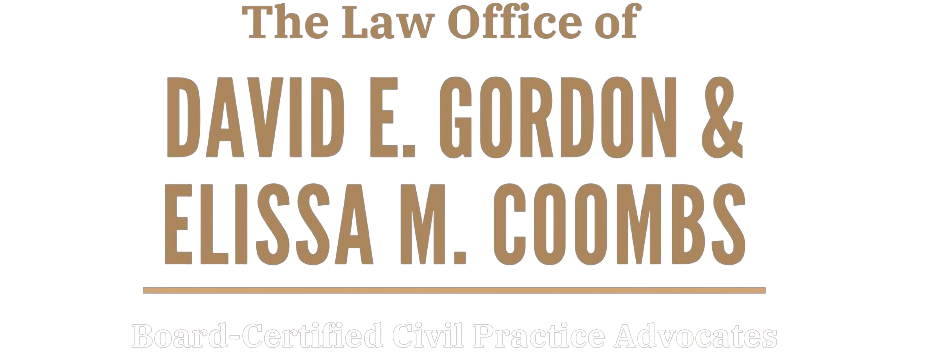
While no one likes to think about the risks of being in a serious car accident in Memphis when they get behind the wheel, traffic collisions happen with much more frequency than most of us expect.
Regardless of whether you are involved in a traffic collision that involves property damage or physical injury, you will need to take steps to establish your right to just compensation if another driver caused your crash.
Numerous types of evidence can be used to establish a case. The following forms of evidence are examples of the kinds of evidence that can be examined in a car accident case.
POLICE ACCIDENT REPORT
Most accidents involve a written police report. Although a police accident report cannot necessarily be admitted as evidence in court, it is often a good starting point in a car accident investigation.
When you are in an auto accident, Tennessee law requires you to stop your car and, in many cases, to also report your accident to the police.
If someone sustains injuries or property damage occurs in excess of $50, the law requires a driver to “immediately, by the quickest means of communication, give notice of the accident to the local police department.” As you can imagine, these conditions arise in most auto accidents.
When a police officer arrives at the scene of an accident, the officer typically will make a written accident report. Depending on the details of the traffic collision, the information contained in the report can vary.
In some cases, the police officer will indicate that one of the drivers violated a Tennessee traffic law. In other situations, the report may fail to make clear whether one driver behaved recklessly.
Accident reports can be particularly helpful in cases where the police officer recorded information about a driver’s traffic law violation.
ACCIDENT SCENE PHOTOS
It is important to take pictures or video at the scene of the accident. Given that nearly all Memphis residents have smartphones with cameras, it is relatively easy to record the scene.
Be sure to take photographs of any and all damage to the vehicles as well as any signs of the accident on the road. Be sure to take photos from multiple angles.
Accident scene photos can help you to prove your version of what happened at the scene of the crash. Indeed, we often think of photographs as the most powerful evidence available in a car accident claim.
EXAMINATION OF THE ACTUAL ACCIDENT SCENE
Looking at the actual accident scene can reveal information about the crash. It is important to record any evidence of damage to the vehicles as well as skid marks on the road. For instance, if you have a police report that indicates the other driver was speeding at the time of the crash, the presence of skid marks on the road may help to prove that party’s reckless driving and his or her attempt (or failure to attempt) to stop the speeding vehicle just prior to the collision.
EYEWITNESS STATEMENTS
Eyewitnesses can provide important evidence about what happened during a car accident. Given that eyewitnesses were not directly involved in the crash, they may have better recall than a party who is shaken up by the collision.
If possible, in the immediate aftermath of the crash, ask eyewitnesses for their contact information. Later on, a witness can give a statement about what he or she saw during the car accident. These eyewitness statements can help to prove that the other driver was negligent or reckless and at fault for the crash.
For instance, an eyewitness may have noticed the other driver texting on his cell phone immediately before the accident. Such information can help to prove fault.
EXAMINATION OF THE CARS
Sometimes, the vehicles themselves provide the best evidence of fault in a car accident. For instance, if the rear-end of your car shows substantial damage while the front-end of the other vehicle appears to have sustained the most damage, that information can help to show that a rear-end collision occurred. Specific damage to the vehicles can also help to support eyewitness statements and information contained in the police accident report.
BLACK BOX DATA
According to Edmunds.com, most vehicles made in the last decade have a black box, or an event data recorder (EDR) that can provide important information about the series of events that led to a car accident. Around 96 percent of new cars sold in the U.S. contain an EDR, which “activates if you brake suddenly, swerve off the road or hit something hard enough to make the airbags deploy.”
CONSULTATION WITH ACCIDENT RECONSTRUCTION EXPERTS
An accident reconstruction expert can provide a scientific approach to determining how and why your car accident happened. These experts have specific training that enables them to look at data related to the car accident, including specific vehicle damage and the final resting positions of the cars, and to in turn determine the details of the collision.
For example, an accident reconstruction expert might be able to use this data to determine the speeds of both vehicles involved in the crash or information about the drivers’ behavior at the time of the accident.
By consulting with an accident reconstruction expert, you can have additional support for the evidence supplied by the police report, accident scene photos and eyewitness statements.
YOUR ATTORNEY’S ROLE IN DEVELOPING YOUR CASE
When a car accident happens, it is extremely important to work with an experienced Memphis car accident lawyer. Your attorney will compile all of the evidence we outlined above and will use it to prepare your case for settlement negotiations or, if necessary, to file a lawsuit.
When the other driver’s negligence results in a serious car accident, a dedicated lawyer can help you to prove fault in the crash and to seek financial compensation for your losses.
To learn more, contact the Law Office of David E. Gordon to learn more about how we can assist with your claim.








